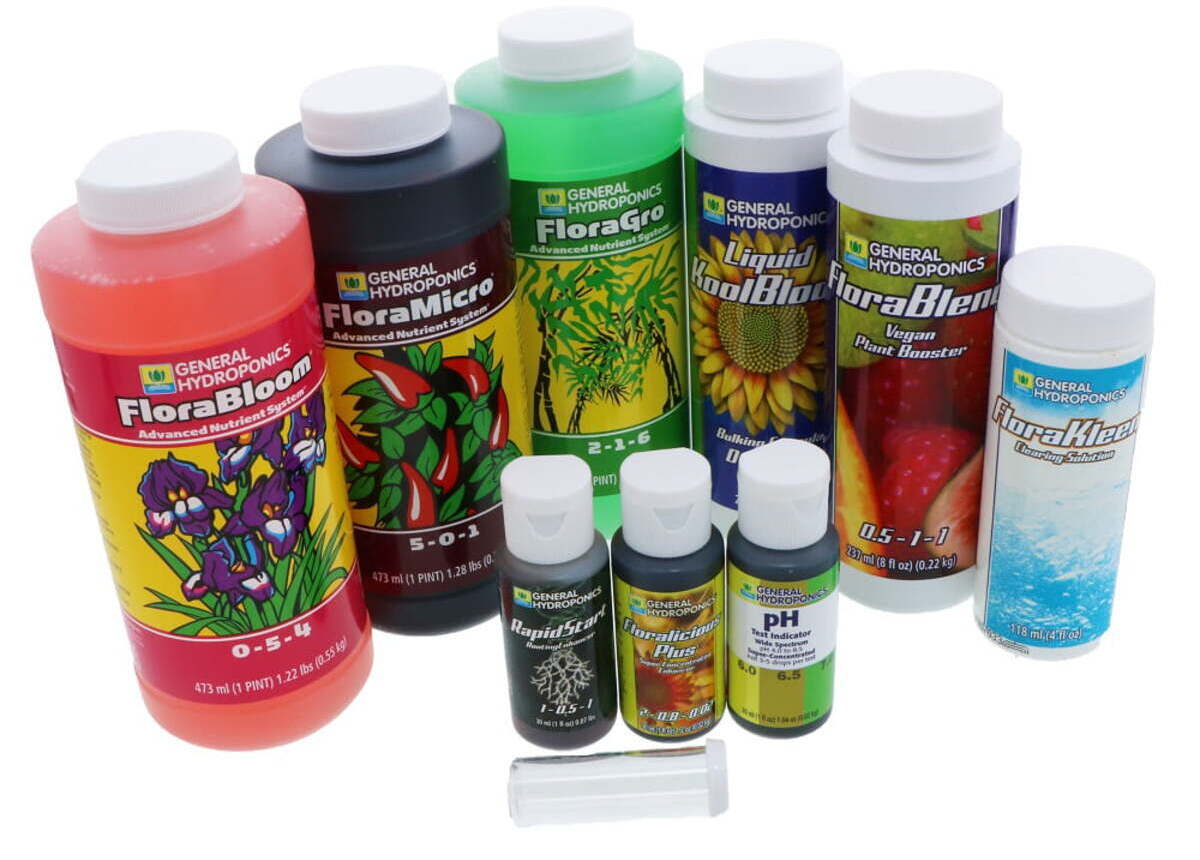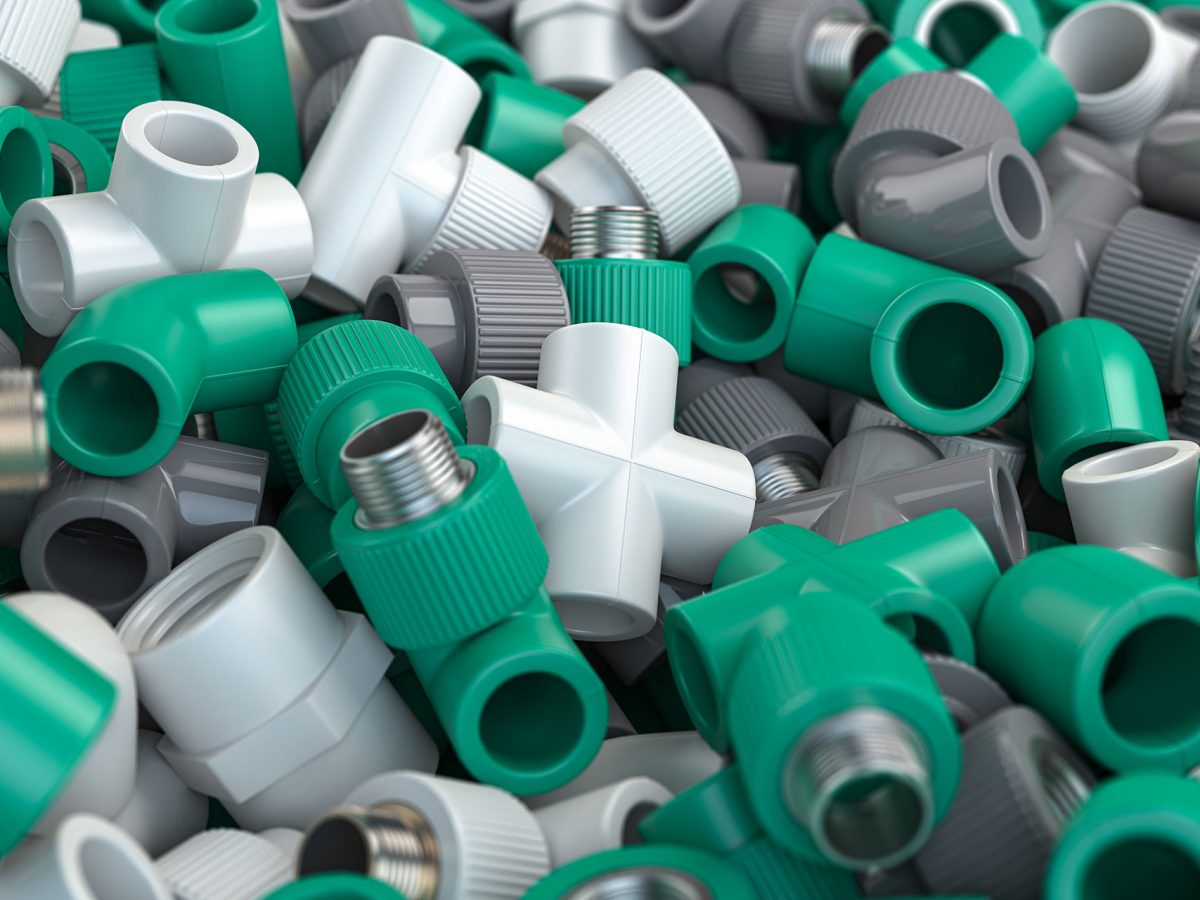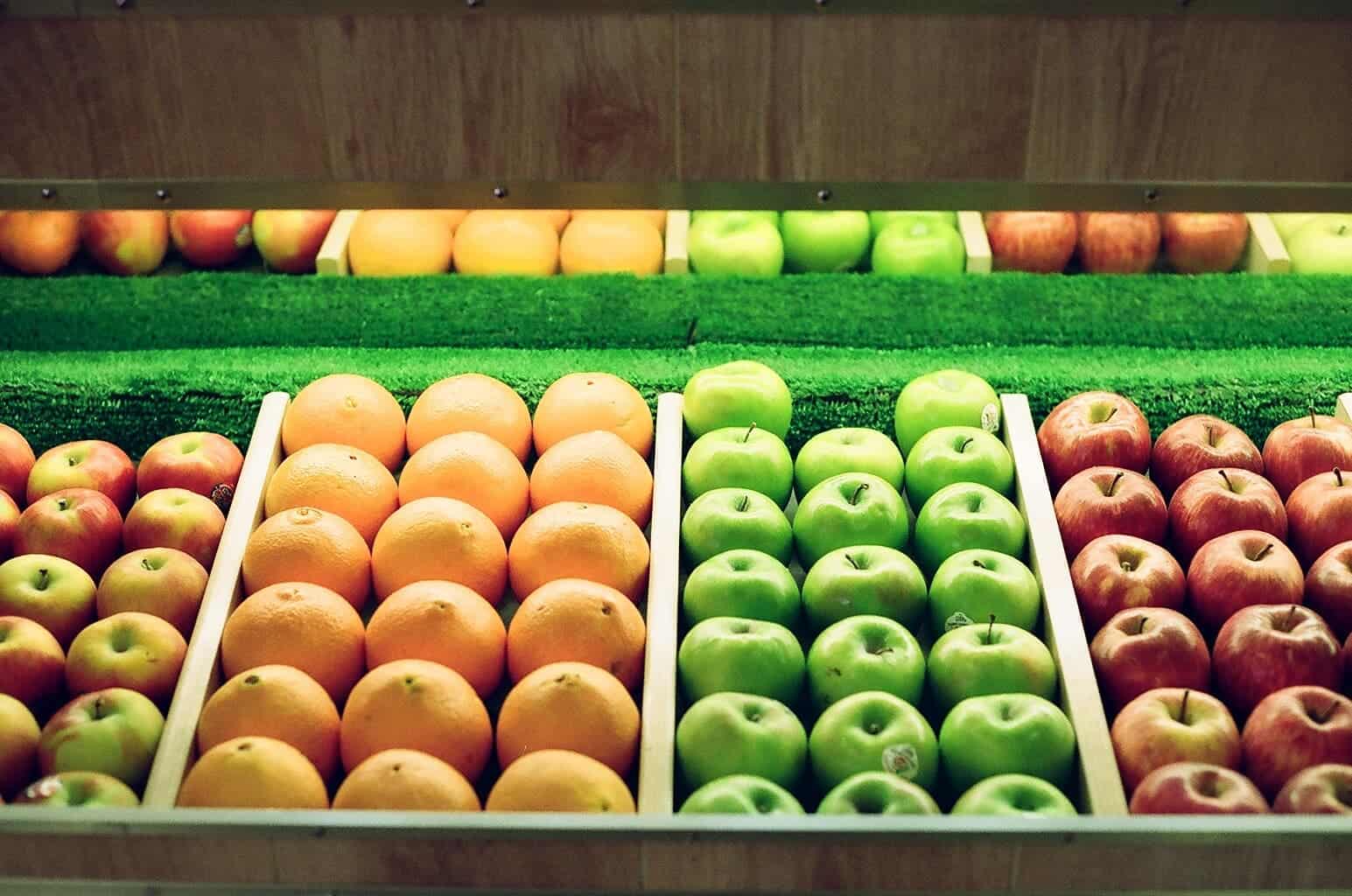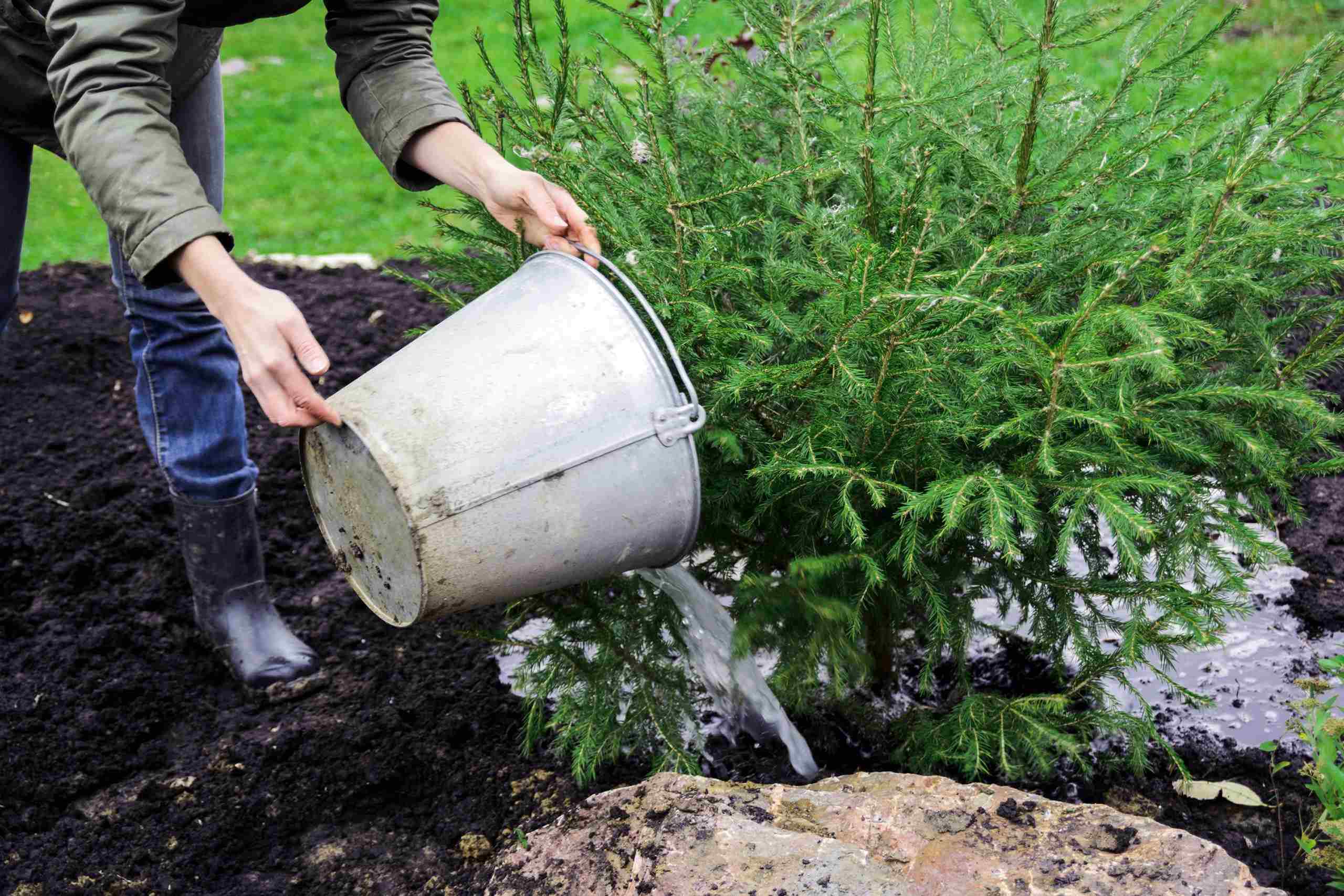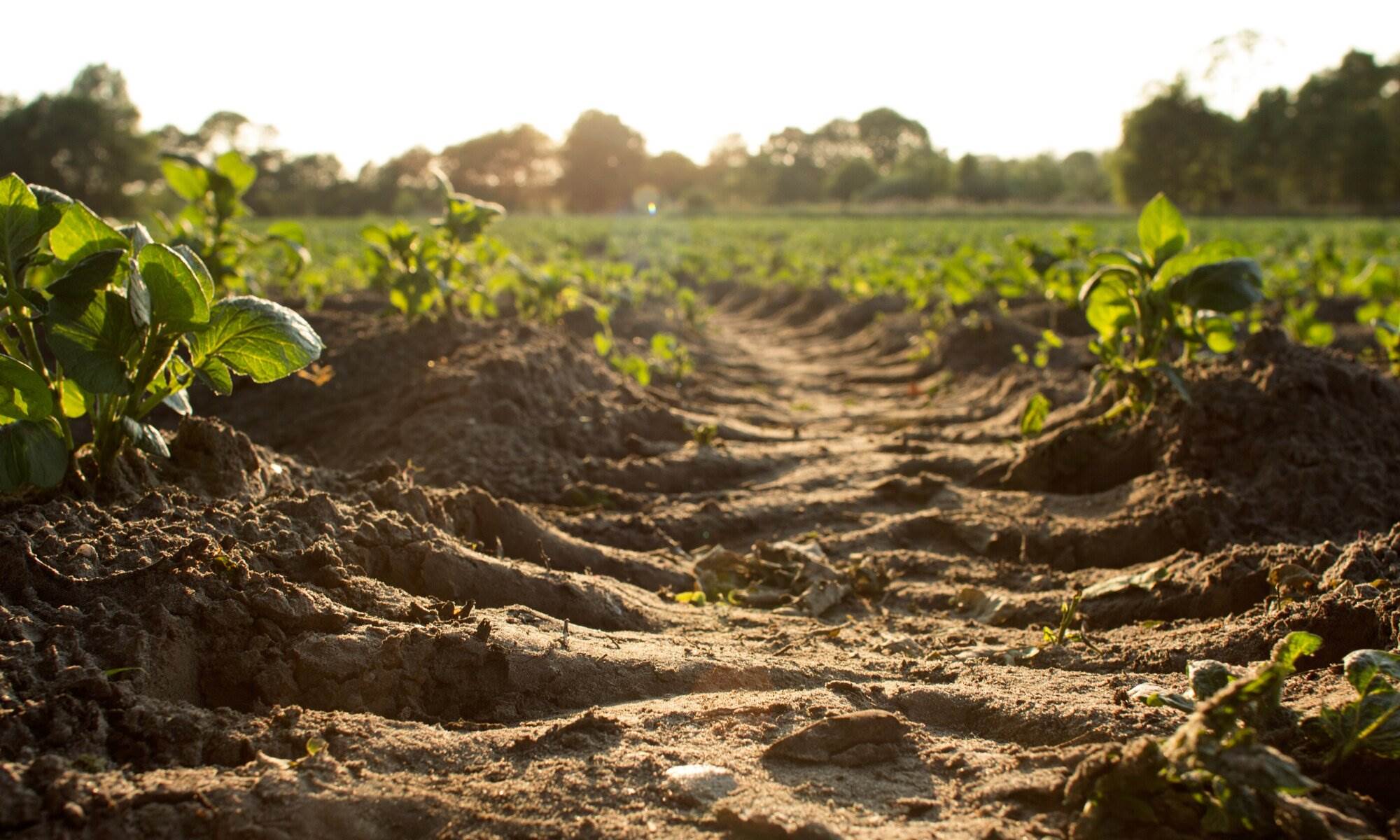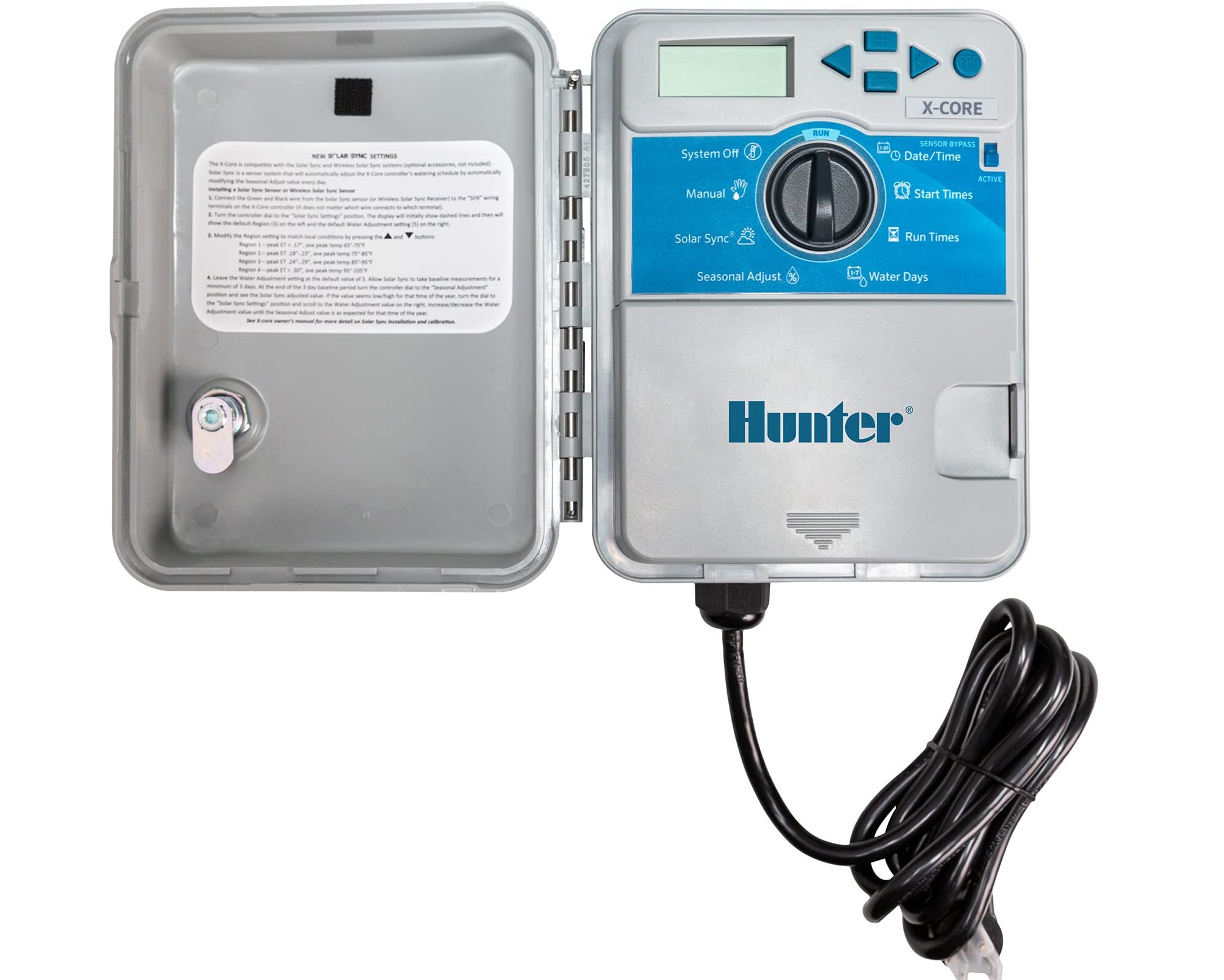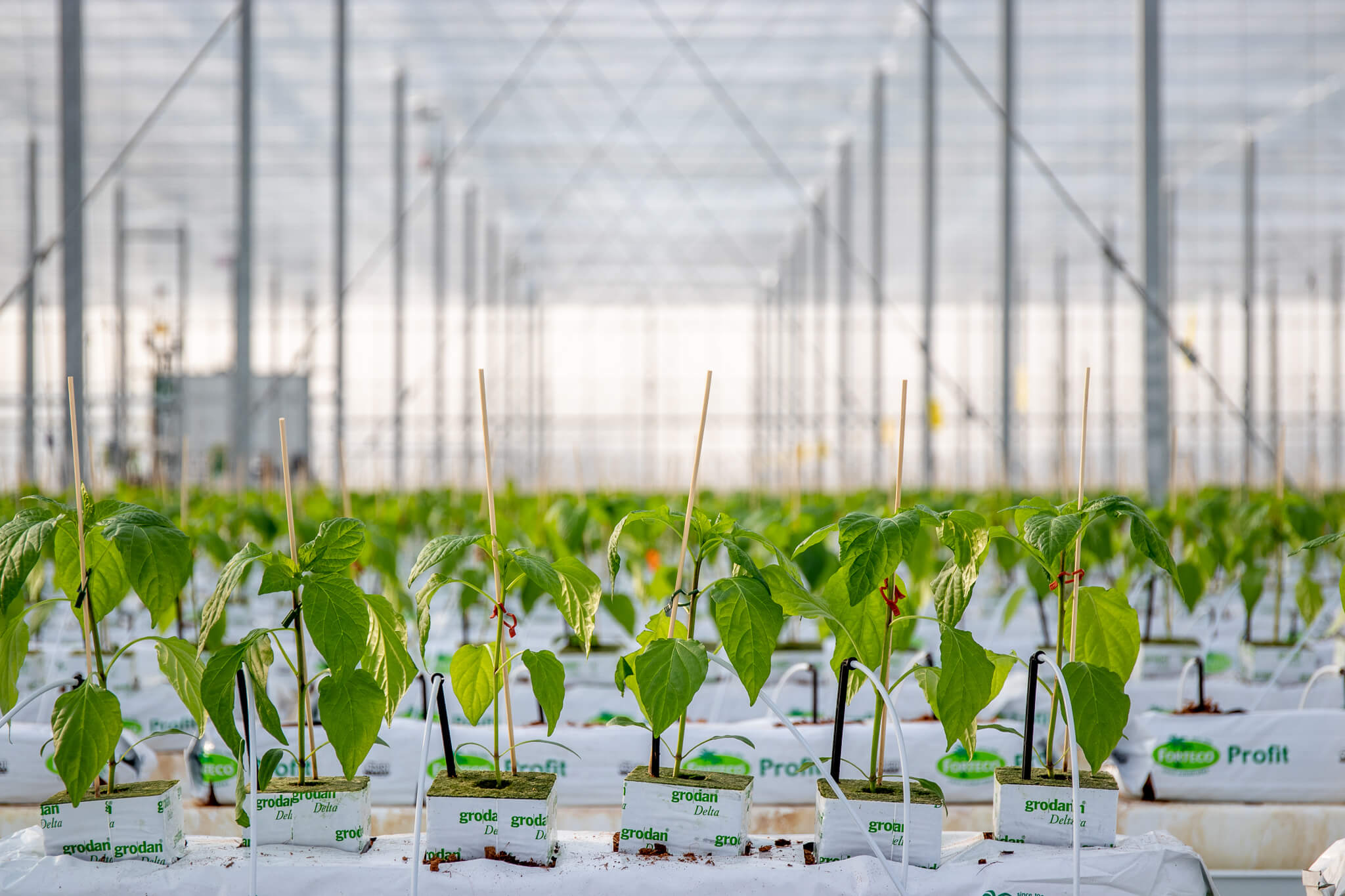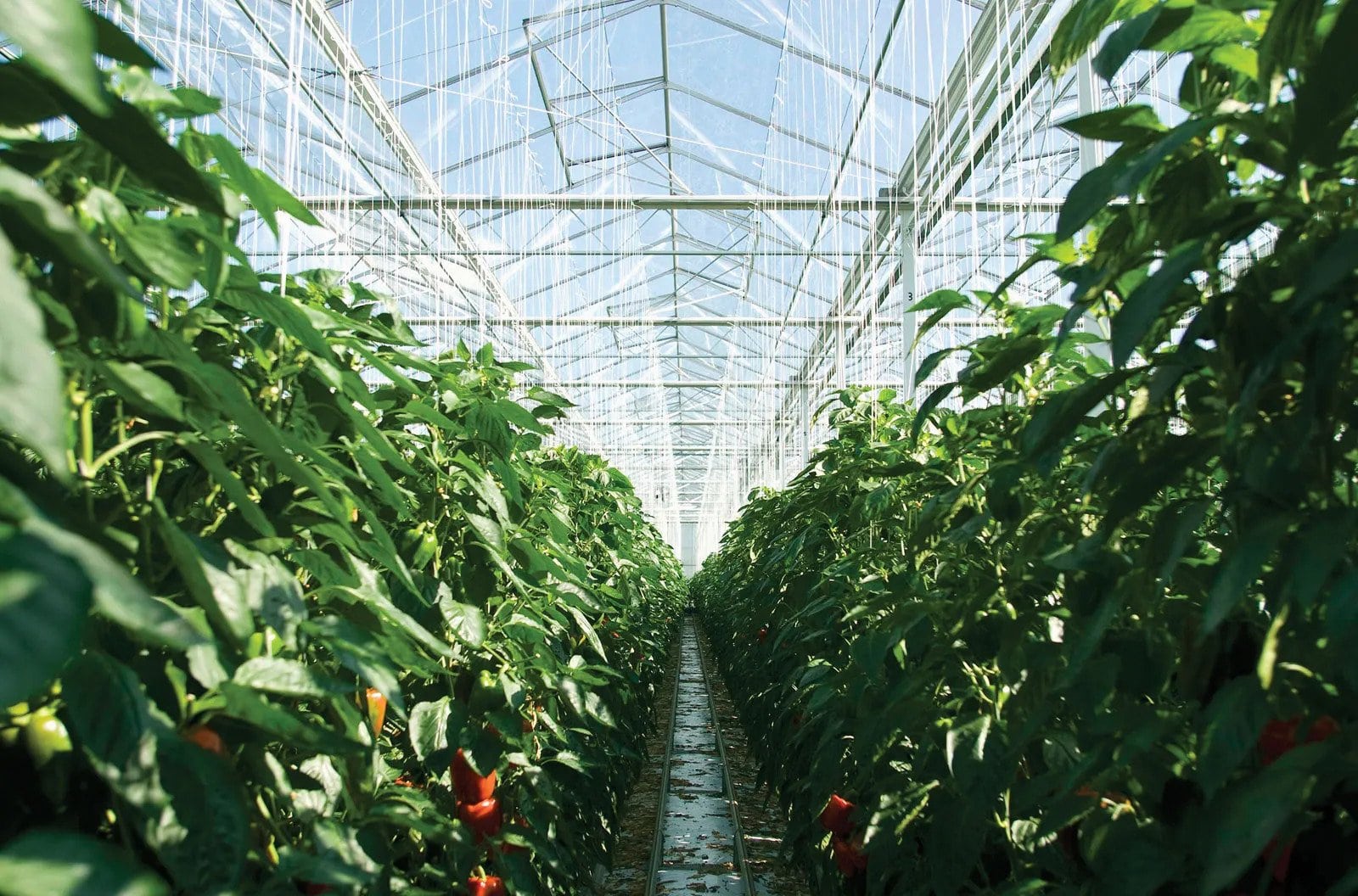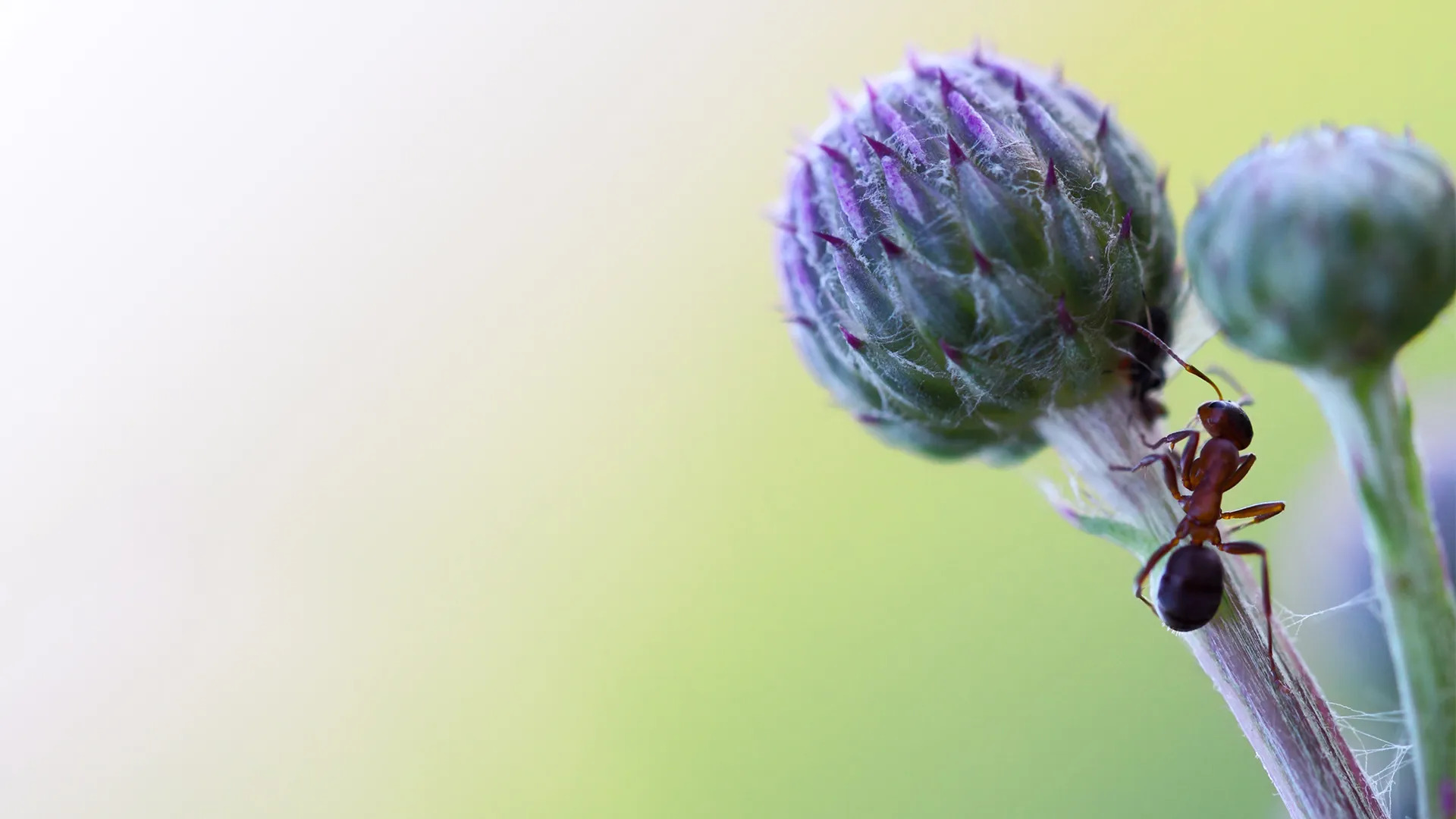Home>Gardening News and Trends>What Is The Most Critical Environmental Factor Of Greenhouse Plant Production?


Gardening News and Trends
What Is The Most Critical Environmental Factor Of Greenhouse Plant Production?
Modified: January 22, 2024
Discover the latest news on the most critical environmental factor in greenhouse plant production. Stay informed and optimize your plant growing processes.
(Many of the links in this article redirect to a specific reviewed product. Your purchase of these products through affiliate links helps to generate commission for Chicagolandgardening.com, at no extra cost. Learn more)
Table of Contents
Introduction
Welcome to the world of greenhouse plant production, where the perfect balance of environmental factors is crucial for the growth and success of plants. Greenhouses provide a controlled environment that allows plants to thrive regardless of external conditions. However, within the greenhouse, there are still several factors that need to be carefully managed to ensure optimal plant development.
From temperature and humidity to light and carbon dioxide levels, every aspect plays a vital role in determining the overall health and productivity of greenhouse-grown plants. In this article, we will explore the most critical environmental factors that influence greenhouse plant production and discuss their significance in creating ideal growing conditions.
Understanding and managing these factors is essential for greenhouse operators, horticulturists, and garden enthusiasts to maximize plant growth and optimize yield. By providing the right conditions, we can create an environment that promotes healthy growth, minimizes stress, and reduces the risk of diseases and pests.
So, let’s dive into the world of greenhouse plant production and explore the key environmental factors that make all the difference in the success of our green thumbs!
Temperature
Temperature is one of the most critical environmental factors influencing greenhouse plant production. It affects various physiological processes, including photosynthesis, respiration, and seed germination, which directly impact plant growth and development.
Each plant has an optimal temperature range in which it thrives. Therefore, maintaining the appropriate temperature inside the greenhouse is essential for promoting healthy growth and ensuring high yields. This can be achieved through the use of heating and cooling systems, ventilation, and the careful selection of plant varieties suited for specific temperature conditions.
During the day, plants generally prefer a temperature range between 70°F to 85°F (21°C to 29°C). This allows for optimal photosynthesis and nutrient absorption. However, nighttime temperatures should be slightly lower, typically between 65°F to 75°F (18°C to 24°C), to promote proper plant respiration and prevent excessive stretching or elongation of stems.
Temperature fluctuations can have detrimental effects on plants. Extreme heat can lead to wilting, dehydration, and stunted growth, while cold temperatures can cause slowed metabolic activity and reduce the efficiency of nutrient uptake.
It is crucial to carefully monitor and control the temperature in the greenhouse, considering factors such as weather conditions, sunlight intensity, and the specific needs of different plant species. Using tools such as thermostats, heaters, shade cloths, and ventilation systems can help maintain the ideal temperature range for optimal plant growth.
Additionally, employing strategies like thermal insulation, such as double-layered greenhouse coverings, can help buffer against temperature fluctuations and create a more stable environment.
By providing plants with the appropriate temperature conditions, greenhouse operators can ensure healthy growth, minimize stress, and maximize the productivity and quality of their crops.
Humidity
Humidity plays a crucial role in greenhouse plant production, as it directly affects transpiration, nutrient uptake, and overall plant health. Maintaining the right humidity levels creates an environment that promotes optimal growth and minimizes the risk of diseases.
The humidity inside a greenhouse is influenced by factors such as ventilation, evaporative cooling, and irrigation practices. The ideal humidity range for most greenhouse plants is between 50% and 70%. However, certain plants, such as tropical species, may require higher humidity levels.
Low humidity levels can lead to excessive transpiration, causing plants to lose water rapidly. This can result in wilting, leaf scorching, and reduced nutrient uptake. On the other hand, high humidity levels can create an environment conducive to the development of fungal diseases, such as powdery mildew and botrytis.
To maintain appropriate humidity levels, greenhouse operators can use various methods, including misting systems, humidifiers, and evaporative cooling pads. These systems introduce moisture into the air, raising humidity levels to the desired range.
Proper ventilation is also critical in controlling humidity. Venting hot and humid air helps prevent condensation, which can lead to the proliferation of fungal pathogens. Adequate air circulation ensures that humidity is evenly distributed throughout the greenhouse.
It is important to note that different plant species have varying humidity requirements. Researching and understanding the specific needs of the plants being cultivated will help greenhouse operators provide the optimal humidity conditions for their crops.
By closely monitoring and adjusting humidity levels, greenhouse operators can create an environment that promotes healthy growth and minimizes the risk of diseases, leading to successful greenhouse plant production.
Light
Light is one of the most essential factors influencing greenhouse plant production. It is the primary source of energy for photosynthesis, the process by which plants convert light energy into chemical energy, ultimately fueling their growth and development.
Plants require different levels and qualities of light depending on their species and growth stage. The two key aspects of light that need to be considered are intensity and duration.
The intensity of light refers to the amount of light energy reaching the plants. Most greenhouse crops require a high light intensity to ensure optimal photosynthesis. However, certain shade-tolerant plants may thrive under lower light conditions.
Duration, or photoperiod, refers to the length of time plants are exposed to light. It is crucial for regulating flowering and certain physiological processes. Many plants have specific photoperiod requirements for triggering flowering or maintaining vegetative growth.
In order to provide the right light conditions, greenhouse operators use a combination of natural sunlight and artificial lighting fixtures. Natural light is the preferred source, as it provides a broad spectrum of wavelengths required by plants. However, depending on the geographic location and season, supplemental lighting may be needed, especially during shorter daylight periods.
Lighting technologies, such as high-pressure sodium (HPS), metal halide (MH), and light-emitting diodes (LEDs), are commonly used in greenhouse production. LED lighting, in particular, has gained popularity due to its energy efficiency and precise control over light spectra.
Properly positioning and adjusting artificial lighting fixtures is crucial to ensure uniform light distribution and prevent shading or overexposure to certain plant areas. Regular monitoring of light levels, using light meters, helps greenhouse operators maintain optimal light conditions.
It is important to note that light requirements vary widely among plant species. Thus, understanding the specific light needs of different crops allows greenhouse operators to tailor lighting strategies to each plant’s requirements, resulting in healthier and more productive plants.
Carbon Dioxide Levels
Carbon dioxide (CO2) is a vital atmospheric gas that plays a significant role in greenhouse plant production. It is an essential component of photosynthesis, fueling the process by which plants convert light energy into chemical energy.
Plants require a certain level of CO2 to carry out efficient photosynthesis. While the atmospheric concentration of CO2 is around 400 parts per million (ppm), studies have shown that greenhouse plants can benefit from higher CO2 levels. Increasing the CO2 concentration inside the greenhouse to around 800 to 1200 ppm can significantly enhance plant growth and productivity.
Elevated CO2 levels boost photosynthesis rates, leading to increased plant biomass, improved resource allocation, and enhanced crop yields. It also enhances water-use efficiency, reducing the water requirements of plants.
To maintain optimal CO2 levels, greenhouse operators can implement strategies such as CO2 supplementation. This is achieved by using CO2 generators or injecting CO2 into the greenhouse. It is important to note that CO2 supplementation is most effective in enclosed greenhouses with sufficient insulation to prevent CO2 loss.
However, it is crucial to strike a balance with other environmental factors. CO2 supplementation should be accompanied by adequate light, temperature, and nutrient availability to maximize its benefits. Monitoring CO2 levels regularly using CO2 monitors is vital to ensure that concentrations remain within the optimal range.
It is worth noting that not all plants benefit from increased CO2 levels. Some plants, particularly those that naturally grow in low CO2 environments, may not respond positively to elevated CO2 and may even experience decreased growth and quality.
Understanding the CO2 requirements of different plants is vital in providing the ideal growing conditions. Adjusting CO2 levels based on crop type, growth stage, and environmental conditions ensures that plants receive the necessary amount of CO2 for optimal growth and productivity.
Air Circulation
Adequate air circulation is a crucial environmental factor in greenhouse plant production. It ensures proper distribution of temperature, humidity, and carbon dioxide throughout the greenhouse, promoting healthy plant growth and preventing the buildup of pests and diseases.
Poor air circulation can lead to stagnant air, which creates favorable conditions for fungal diseases and pests to thrive. It can also result in localized temperature and humidity variations, causing uneven growth and nutrient deficiencies in plants.
To maintain effective air circulation, greenhouse operators employ various strategies. A well-designed ventilation system is essential for continuously exchanging stale air with fresh air. This can be achieved through the use of vents, fans, and exhaust systems placed strategically to create a flow of air.
Proper positioning and size of fans are crucial to ensure optimal air movement. Fans should be placed at different heights to avoid dead spots and ensure all areas receive adequate air circulation.
In addition to mechanical ventilation, natural ventilation can also play a role in promoting air circulation. This can be achieved through the strategic placement of doors, windows, or vents that allow for the entry and exit of fresh air.
Regular monitoring of air circulation is important to identify areas with poor airflow. This can be done by observing plant growth patterns, checking for pest and disease hotspots, and using tools such as anemometers to measure airflow velocity.
Furthermore, proper spacing of plants within the greenhouse is essential to allow for adequate air movement. Overcrowding can impede airflow and create microclimates that favor the development of diseases.
By ensuring proper air circulation, greenhouse operators create an environment that promotes optimal growth, reduces the risk of pests and diseases, and improves the overall health and productivity of their plants.
Nutrient Availability
Nutrient availability is a critical factor in greenhouse plant production. Plants require a range of essential nutrients, including macronutrients such as nitrogen, phosphorus, and potassium, as well as micronutrients like iron, zinc, and manganese, to support their growth and development.
Soilless growing media, such as hydroponics or substrate-based systems, are commonly used in greenhouse production. These media provide an opportunity for precise control over nutrient availability, ensuring that plants receive the necessary elements in optimal amounts.
Proper nutrient management involves monitoring and adjusting the nutrient solution based on the specific needs of the plants. This can be achieved through regular measurement of pH and electrical conductivity (EC) levels of the nutrient solution.
Depending on the crop and growth stage, nutrient solution formulations may need to be adjusted to ensure that plants receive the appropriate balance of nutrients. This can be done by adding fertilizers or adjusting the concentration of individual nutrients in the solution.
Additionally, it is essential to maintain proper irrigation practices to avoid nutrient imbalances or deficiencies. Overwatering can lead to leaching of nutrients, while underwatering can result in nutrient accumulation and toxicity.
Monitoring plant health and growth can serve as indicators of nutrient availability. Visual signs of deficiencies, such as yellowing leaves or stunted growth, can help identify nutrient imbalances and guide appropriate adjustments.
Regular soil or substrate testing can also provide valuable insights into the nutrient availability and pH levels. This allows greenhouse operators to make informed decisions on nutrient management and maintain optimal growing conditions.
Furthermore, organic fertilizers or amendments can be incorporated into the growing media to provide a slow-release source of nutrients or improve soil fertility in substrate-based systems.
By ensuring proper nutrient availability, greenhouse operators can support healthy plant growth, improve crop yield and quality, and minimize the risk of nutrient-related disorders or deficiencies.
Water Quality
Water quality is a crucial aspect of greenhouse plant production as it directly affects plant health and growth. The quality of water used for irrigation and nutrient solutions can impact nutrient availability, pH levels, and overall plant performance.
Several factors determine water quality, including pH, mineral content, dissolved solids, and the presence of harmful substances like heavy metals or pathogens. Understanding and managing these factors is essential to provide an ideal growing environment for plants.
The pH of water plays a significant role in nutrient availability. Most greenhouse plants thrive in slightly acidic to neutral conditions, with a pH range of 5.5 to 6.5. pH levels outside this range can affect nutrient uptake and lead to nutrient imbalances or deficiencies.
Mineral content, including the presence of calcium, magnesium, and other essential elements, can influence water quality. High mineral content can impact pH levels and create potential issues such as scaling in irrigation systems.
The presence of dissolved solids, measured as electrical conductivity (EC), can also affect water quality. High EC levels can indicate the presence of excessive salts, which can be detrimental to plant health and growth. Regular monitoring of EC levels is crucial to prevent salt accumulation in the growing media.
Water sources contaminated with harmful substances like heavy metals or pathogens can have detrimental effects on plants. These contaminants can not only impact plant health but also pose risks to human health. Proper filtration and treatment methods, such as reverse osmosis or ultraviolet (UV) sterilization, can help remove contaminants and ensure water safety.
Regular water testing is essential to assess water quality and identify any necessary adjustments. This includes testing for pH levels, EC, mineral content, and the presence of harmful substances. Based on the results, appropriate measures can be implemented, such as pH adjustment or water treatment, to ensure optimal water quality.
It is also important to note that different plant species may have specific water quality requirements. Researching and understanding the specific needs of the plants being cultivated will guide decisions on water quality management in the greenhouse.
By providing high-quality water for irrigation and nutrient solutions, greenhouse operators can support healthy plant growth, optimize nutrient availability, and minimize the risk of potential issues related to water quality.
Disease and Pest Control
Disease and pest control is a vital aspect of greenhouse plant production to ensure the health and productivity of plants. Greenhouses, with their controlled environments, can provide favorable conditions for the development and spread of diseases and pests. Therefore, effective management strategies are necessary to prevent and mitigate these issues.
Disease control begins with preventive measures such as sanitation and good hygiene practices. Regular cleaning of greenhouse structures and equipment, removing plant debris, and disinfecting tools help prevent the buildup and spread of pathogens.
The use of disease-resistant plant varieties can also minimize the risk of infection. Greenhouse operators should select plant varieties that are known to have resistance or tolerance to common diseases in their region.
Proper plant nutrition and plant health management are essential in disease prevention. Providing plants with balanced nutrition and maintaining optimal growing conditions strengthen their immune systems and reduce their susceptibility to diseases.
Pest control in the greenhouse involves monitoring for pest populations and implementing appropriate control measures. These measures can include biological control, such as using beneficial insects, or chemical control using pesticides. It is important to follow integrated pest management (IPM) principles, which prioritize the use of environmentally friendly and sustainable pest control practices.
Monitoring systems, such as sticky traps or visual inspection, help identify the presence of pests early on so that appropriate action can be taken. Regular scouting and monitoring allow for early detection of pest populations, reducing the need for more aggressive and potentially harmful control methods.
Proper airflow and air circulation in the greenhouse can also help reduce pest issues by preventing stagnant areas where pests can multiply. Using insect screens or netting on vents and entry points can further prevent pest entry into the greenhouse.
Greenhouse operators should be aware of potential pest and disease outbreaks in their area and stay informed about effective control methods and techniques. Regular communication with local agricultural extension services or experts can provide valuable guidance.
Implementing a comprehensive and proactive approach to disease and pest control in the greenhouse ensures the health and productivity of the plants, reduces the need for excessive pesticide use, and contributes to the long-term sustainability of greenhouse plant production.
Conclusion
Greenhouse plant production is a complex endeavor that requires careful management of various environmental factors. Temperature, humidity, light, carbon dioxide levels, air circulation, nutrient availability, water quality, and disease and pest control all play crucial roles in creating the optimal growing conditions for greenhouse plants.
Maintaining the right temperature range ensures that plants can carry out essential physiological processes like photosynthesis and respiration. Proper humidity levels promote healthy growth and prevent the development of fungal diseases, while adequate lighting allows for optimal photosynthesis and plant development.
Controlling carbon dioxide levels enhances plant growth and productivity, while proper air circulation ensures the even distribution of temperature, humidity, and carbon dioxide throughout the greenhouse. Nutrient availability is vital for supporting plant growth and preventing nutrient imbalances or deficiencies.
Water quality plays a key role in the success of greenhouse plant production, with pH levels, mineral content, and potential contaminants impacting plant health and nutrient uptake. Finally, effective disease and pest control measures are necessary to minimize the risk of infections and pest infestations that can compromise plant health and productivity.
By closely monitoring and managing these environmental factors, greenhouse operators can create an ideal growing environment that maximizes plant growth, minimizes stress, and leads to high-quality and abundant crops.
It is important to continually educate oneself about the latest research and best practices in greenhouse plant production, as advancements and new techniques are constantly emerging. Regular monitoring, adjustment, and preventive measures are key to maintaining a successful greenhouse operation.
Through careful attention to these critical environmental factors, greenhouse operators can create a thriving and productive ecosystem where plants flourish, ensuring a bountiful harvest and beautiful displays of greenery year-round.

